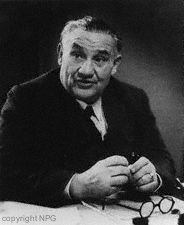The Link: Palestine and the Holocaust
The main Zionist efforts and objective now concentrated on the abrogation of the White Paper. With the White Paper out of the way, and with world public sympathy aroused as a result of Nazi barbarism against the Jews in Europe, the Zionists could move to present this abrogation of the White Paper as the one available solution to move Europe’s Jews to Palestine. This was the main call at the Biltmore Conference in New York (see later) which stated: “The policy of the White Paper is cruel and indefensible in its denial of sanctuary to Jews fleeing from Nazi persecution”.
This statement is inexplicable in terms of logic and equity. The Allies were victorious in the war against Germany. Nazism had been crushed. Jewish survivors were moved into relief centres which were supervised and protected by Allied troops and Palestine Jewish Brigades. The plight of these Jewish survivors was a scar on the conscience of the Western world which possessed the resources and the ingenuity to provide them with a secure future. But to exploit the plight of the Jewish refugees for the political purpose of tearing the White Paper of 1939, itself the end result of two agonised decades of Palestinian struggle for national survival, is to throw into question the motive of the American endorsement.
Moved by the plight of Jewish Holocaust survivors, no less a person that the US President Harry S Truman was endorsing the Biltmore declaration. He asked the British Government in August 1945 to allow the immediate immigration of 100,000 Jews from Europe into Palestine while declaring to his constituents (as he ran for election in 1948) that the US would ‘alone’ bear the brunt of the 300,000 refugees moving into the US. This secured for him the support of the Zionist leadership in America and alienated the Arab world from the West. Truman told his assembled American diplomats from Arab countries: “I am sorry, gentlemen, but I have to answer to hundreds of thousands who are anxious for the success of Zionism; I do not have hundreds of thousands of Arabs in my constituency”.
At war’s end, the international environment suffers from general fluidity and is therefore vulnerable to territorial surgery. World public opinion has been saturated by the Holocaust tragedy and its sympathy for Zionism peaked regardless of what it understood Zionism to be. The corollation between the Zionist doctrine and its aims in Palestine and the Holocaust tragedy itself became clear. The political solution for the Jewish problem had to be at the expense of the humanitarian one.
 The staunchly pro-Zionist Ernest Bevin (1881-1951), British Secretary for Foreign Affairs, established a joint Anglo-American Committee of Inquiry, made up of 6 ‘non-official citizens’ of Britain and USA, to look into the Palestine question.
The staunchly pro-Zionist Ernest Bevin (1881-1951), British Secretary for Foreign Affairs, established a joint Anglo-American Committee of Inquiry, made up of 6 ‘non-official citizens’ of Britain and USA, to look into the Palestine question.
It set out for Europe and Palestine in 1946 an event which marked the beginning of a diplomatic struggle between the Palestinians and the Zionists for the sympathy and understanding of world public opinion through its new forum, the United Nations which was only 1 year old.
It is worth noting that the Committee of Inquiry first toured the Jewish concentration camps in Europe before travelling to Palestine, a critical success by the Zionist lobby to impact committee members with the Holocaust events. Many camp dwellers, initially not wishing to immigrate to Palestine, were influenced by Jewish organisations to adopt a pro-Zionist line when interviewed by Committee members and to request that they be moved to Palestine.
Consequently, when the Committee of Inquiry reached Palestine, it was warmly welcomed by the Jewish Agency but was boycotted by the Arab High Committee. The Committee of Inquiry was already leaning towards the view that the Jewish situation in Europe had to be linked with Jewish migration to Palestine. This link proved to be a vital factor in understanding the role played by the Holocaust in the creation of the state of Israel.
On 30 April 1946, the Committee concluded its work by recommending that 100,000 Jews from Europe be allowed admission into Palestine and the establishment of a bi-national state under a UN trusteeship with equal rights for both communities. These proposals were rejected by the British Government on the basis of Clause 76 of the UN Charter which protects the right to independence through majority rule for any nation desiring it.
In 1947, and despite mass illegal Jewish immigration into Palestine, the Palestinians still constituted 65% of the population of Palestine: that is, 1,350,000 Palestinians vs 650,000 Jews (of whom 253,700 were born in Palestine and the rest were alien immigrants).
With the Mandate coming to an end, fierce Zionist operations against the British in Palestine forced the British to submit the Palestine problem to the United Nation, which in February 1947, was only 2 years old with little experience in solving regional conflicts. With 5 permanent members and 6 non-permanent members, the UN General Assembly began its crucial deliberations which, as we shall see, sealed Palestine’s fate and squashed its hopes of becoming an independent nation.